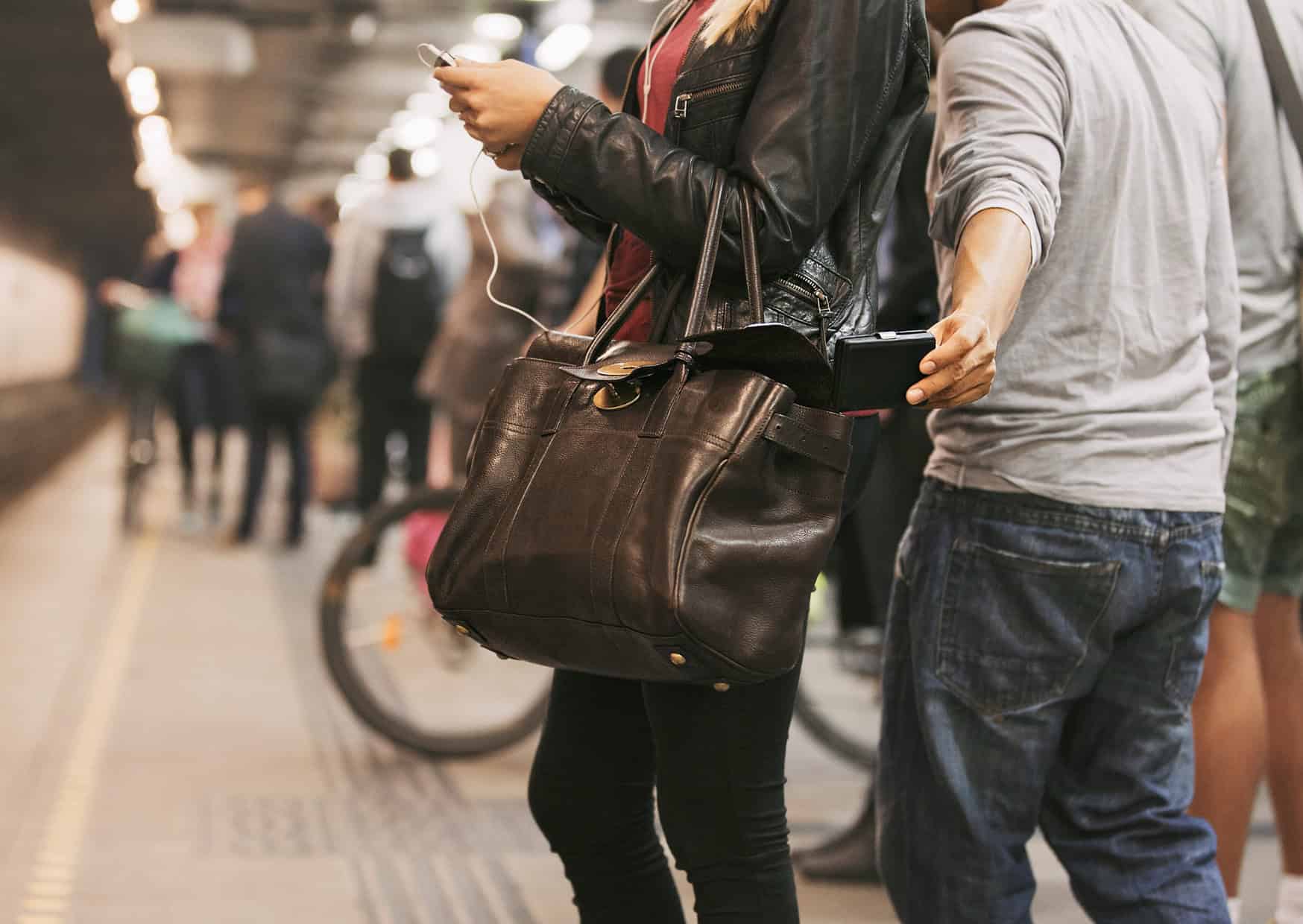
Summer in Europe has just started and every major tourist destination is overly packed. And while you are on a vacation mindset, something you need to be reminded of: pickpockets in Europe. They are prevalent in every major tourist destination and like it or not, you’ll have to be aware to make sure you protect yourself.
Venturing through Europe’s diverse landscapes, from the serene canals of Amsterdam to the sun-kissed shores of the Mediterranean, offers an unrivaled blend of adventure and cultural immersion. Each city tells its story through historic landmarks, bustling markets, and vibrant street life. Yet, the excitement of these discoveries comes with a caveat: the persistent threat of pickpockets. This guide dives deep into the tactics of these adept thieves and arms you with strategic defenses to protect your belongings, ensuring that your European adventures remain joyous and secure.
📌 Additional Reads:
– Our Best Tips on How to Plan a Europe Trip for under $1000
– 10 Incredible Beautiful Cheap Destinations in Europe – Best Tips For Budgeting in Europe
– 10 Popular Tourist Traps in Europe And How to Avoid Them
– Protect yourself with our top Europe travel insurance – our full review
How Pickpockets Operate in Europe and Why Pickpockets in Europe Are So Prevalent
Common Hunting Grounds

Pickpockets favor bustling locations where tourists’ attention is diverted. Whether it’s navigating through the crowded Grand Bazaar in Istanbul, waiting in line at the Vatican, or watching street performers in Covent Garden, these environments provide perfect cover for pickpockets. Understanding their favorite spots can help you stay vigilant.
Pickpockets are not just opportunistic but strategic, targeting areas where tourists are most likely to be distracted by their surroundings. Here are some specific places across various European cities where tourists should be extra vigilant:
- Paris: Beyond the iconic Eiffel Tower and the busy Louvre Museum, the Montmartre area, known for its bustling art scene and panoramic city views, is notorious for pickpockets. The crowded steps leading up to the Sacré-Cœur attract many tourists, making it a prime area for thieves to operate.
- Rome: The areas around major historical sites such as the Colosseum and the Trevi Fountain are hotspots for pickpockets. The dense crowds that gather to admire these marvels create the perfect cover for thieves to brush past unsuspecting tourists.
- Barcelona: Las Ramblas, a famous boulevard filled with street performers and vendors, is a well-known area for pickpocketing. The street’s vibrancy and crowd density provide an ideal environment for pickpockets to blend in and target tourists engrossed in their surroundings.
- Amsterdam: Tourists should be cautious in the bustling flea markets, particularly the Waterlooplein market. These markets are crowded and full of distractions, offering ample opportunities for pickpockets to strike while visitors examine goods.
Distraction Techniques
Pickpockets employ a variety of distraction techniques to disarm their targets of vigilance. Understanding these methods is key to staying alert in potentially vulnerable situations:
- Bump and Grab: Common in the cramped confines of public transport, like the Metro in Paris or the U-Bahn in Berlin, the bump and grab is startlingly effective. A pickpocket will create a disturbance—often by pushing or jostling during the rush of boarding or disembarking—to mask the sensation of hands stealing from pockets or bags.
- Street Performances: These public spectacles are ideal for pickpockets. In cities like Prague, street performers near tourist landmarks draw crowds. For example, the fire shows by Charles Bridge captivate tourists, making it easier for accomplices to work the crowd. While you’re fixated on the performance, thieves slip through the crowd, quietly pilfering from unattended bags and pockets.
- Fake Fights or Arguments: Sometimes, pickpockets stage loud arguments or fights. These dramatic scenes naturally draw people’s attention, creating a perfect smokescreen for accomplices to work their way through the distracted crowd.
- The ‘Helpful’ Stranger: This technique involves a pickpocket posing as a good Samaritan. They might offer to help you with directions using a large map, conveniently draped over your view of your belongings, or assist you in picking up dropped items, during which your attention is diverted enough for an accomplice to make a quick theft.
Teamwork in Action

Pickpocketing is often not a solo act but a coordinated effort involving multiple roles, each with a specific function to ensure the success of their deceitful endeavors:
- The Spotter: This team member observes from a distance, looking for potential targets—often those who are distracted, appear affluent, or are managing cumbersome bags. They signal to their teammates when they identify a good target.
- The Blocker (or Distractor): As the name suggests, this person’s role is to block the victim’s line of sight or physically impede their movement in some way. This may be the individual asking for directions or the one who ‘accidentally’ spills something on you.
- The Dipper: This is the actual thief, who performs the theft while the victim is distracted by the blocker. With swift and practiced motions, they remove valuables from pockets, purses, or backpacks.
- The Passer: Once the valuables are stolen, they are often quickly passed to another team member who walks away with the stolen items. This reduces the risk for the dipper and complicates efforts by the victim to recover their belongings, as the items are no longer with the thief.
Preventing Theft Through Awareness
Understanding these distraction techniques and the roles within pickpocket teams can immensely boost your defenses. By remaining aware of these common tactics, you can maintain a higher level of alertness in crowded or distracting environments. Always keep a hand on your belongings and stay cognizant of overly friendly or helpful strangers in busy tourist areas.
Signs You’re Being Targeted by Pickpockets
Behavioral Red Flags
Increased vigilance can help you spot suspicious behavior. If you feel that someone is infringing on your personal space without an apparent reason, or if an individual or group seems to be following you across different locations, these are potential indicators that you are being targeted.
Appearance Isn’t Always Telling
Pickpockets often do not fit the stereotypical image of a thief; they can be well-dressed and unassuming, blending seamlessly with the crowd. To reduce suspicion, they might appear as a fellow tourist, complete with a camera and guidebook.
Proactive Measures to Protect Yourself
Secure Your Belongings
Investing in security-focused travel gear can significantly reduce theft risks. Money belts, anti-theft backpacks, and cross-body bags with secure closures are excellent for keeping your valuables safe. Always ensure your zippers are closed and if possible, use locks on your bag openings.
Stay Vigilant in Crowded Places
Always maintain a defensive posture in crowded settings. Keep your bag in front, hands over pockets where wallets or phones are stored, and never allow a stranger to invade your personal space without cause.
Travel Light
The fewer valuables you carry, the less you stand to lose. Only take essential items on your daily outings, and store extra cash, passports, and expensive electronics in secure storage options like hotel safes.
Utilizing Technology to Secure and Recover Your Phone
Tech Tips
Modern smartphones are a goldmine for pickpockets not just for their resale value, but for potential access to banking apps and personal data. Using features like ‘Find My iPhone’ or Google’s ‘Find My Device’ can help you track and secure your phone remotely. Enabling these features before you travel is a proactive step toward security.
Regular Backups
Regularly backing up your phone can prevent the loss of valuable personal information. Make sure that your photos, contacts, and other important files are backed up to the cloud, ensuring that you can recover your data even if the device is lost.
Understanding the Challenges in Combating Pickpocketing
Why Is It Difficult to Combat Pickpocketing?
The fleeting interactions that characterize pickpocketing make it difficult for victims to realize they’ve been robbed until it’s too late. This, combined with the high volume of cases and often lower-priority status of such thefts in the eyes of local law enforcement, complicates efforts to crack down on pickpockets.
Local Initiatives
Cities like Barcelona and Paris, recognizing the impact of tourism on their economy, have taken measures to mitigate these crimes through increased policing, surveillance, and public awareness campaigns aimed at educating tourists about the risks of pickpocketing.
What to Do If You’re Pickpocketed
Immediate Steps
Immediately reporting the crime to local authorities is crucial. In many European cities, there are dedicated tourist police who are familiar with such issues. Canceling any stolen credit or debit cards can prevent financial loss. Contacting your embassy or consulate can facilitate replacements if important documents are taken.
Access Emergency Resources
Before traveling, familiarize yourself with emergency contact numbers and ensure you have access to funds through multiple sources, such as credit cards, emergency cash, or traveler’s checks. Many travel insurance policies, including emergency cash transfers, offer support in these situations.
Conclusion
Exploring Europe should be an exhilarating experience, not marred by the concern of theft. Equipping yourself with knowledge and the right tools can significantly mitigate the risk of pickpocketing. Remain vigilant, but also enjoy the rich cultures and stunning vistas that Europe has to offer.
We invite you to share your experiences and tips on avoiding pickpockets during your travels. Your insights are valuable to us and can help others travel more safely. Subscribe for more practical travel advice, and continue exploring the world with confidence and peace of mind.
About the Author: Ruben, co-founder of Gamintraveler.com since 2014, is a seasoned traveler from Spain who has explored over 100 countries since 2009. Known for his extensive travel adventures across South America, Europe, the US, Australia, New Zealand, Asia, and Africa, Ruben combines his passion for adventurous yet sustainable living with his love for cycling, highlighted by his remarkable 5-month bicycle journey from Spain to Norway. He currently resides in Spain, where he continues sharing his travel experiences with his partner, Rachel, and their son, Han.
